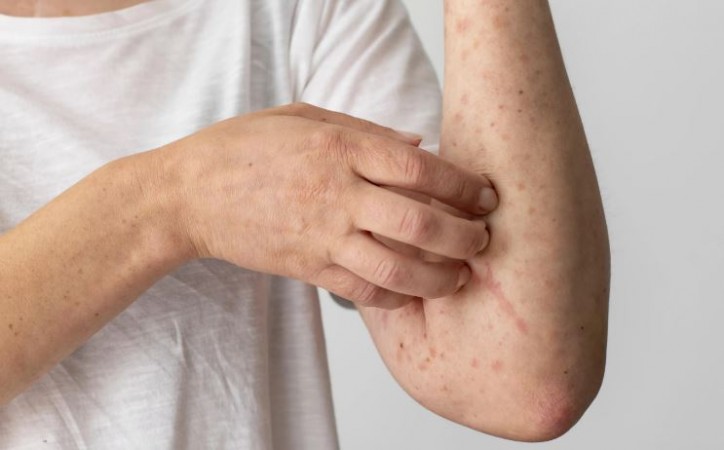
Fungal infections are a common concern, particularly during humid seasons like monsoon, where moisture fosters bacterial growth on the skin. These infections manifest through symptoms such as itching, redness, and in some cases, blistering or peeling skin. While over-the-counter medications are available, natural home remedies can also provide effective relief and prevention. Here are five proven home remedies to combat fungal infections:
1. Tea Tree Oil
Tea tree oil is renowned for its potent antifungal properties. It contains compounds like terpinen-4-ol that inhibit the growth of fungi responsible for skin infections. To use tea tree oil effectively, dilute a few drops in a carrier oil such as coconut oil or olive oil and apply it directly to the affected area using a cotton swab. Repeat this process two to three times daily until the infection subsides.
2. Yogurt
Yogurt contains live cultures of beneficial bacteria such as lactobacillus acidophilus, which can help restore the natural balance of microbes on the skin. This makes it effective against fungal infections like yeast infections and athlete's foot. For topical application, apply plain yogurt directly to the affected area and leave it on for 30 minutes before rinsing off with lukewarm water. Consuming plain yogurt daily can also support overall skin health and immunity.
3. Garlic
Garlic is another powerful natural remedy with antifungal properties. It contains allicin, a compound that exhibits strong antimicrobial activity against various fungal strains. To use garlic for fungal infections, crush a few cloves and apply the paste directly to the affected area. Let it sit for 20-30 minutes before rinsing off with water. Alternatively, incorporate more garlic into your diet to boost its internal benefits.
4. Neem
Neem, or Indian lilac, has been used for centuries in Ayurvedic medicine for its antibacterial, antifungal, and antiviral properties. Boil neem leaves in water and use the cooled water as a wash for affected areas. You can also make a paste of neem leaves and apply it directly to the skin. Neem oil is another option for topical application, diluted with a carrier oil like coconut oil.
5. Apple Cider Vinegar
Apple cider vinegar (ACV) is known for its ability to restore pH balance to the skin and create an inhospitable environment for fungi. Mix equal parts of ACV and water and apply the solution to affected areas using a cotton ball. Leave it on for 15-20 minutes before rinsing off with water. Repeat this process twice daily until symptoms improve.
Additional Tips:
Maintain Skin Hygiene: Keeping the skin clean and dry, especially in areas prone to moisture accumulation, can help prevent fungal infections.
Avoid Sharing Personal Items: Fungi can spread through contact with infected items such as towels, clothing, and shoes. Avoid sharing these items to reduce the risk of transmission.
Choose Breathable Fabrics: Wearing breathable fabrics like cotton can help reduce moisture buildup on the skin, which creates an ideal environment for fungi.
By incorporating these natural remedies into your skincare routine and following preventive measures, you can effectively manage and prevent fungal infections. However, if symptoms persist or worsen, consult a healthcare professional for proper diagnosis and treatment. Taking proactive steps towards skin health will ensure you stay comfortable and infection-free.
What is the Chandipura Virus? Know the Latest Outbreak in Gujarat
India Strengthens Health Diplomacy: Jaishankar Opens First Jan Aushadi Kendra in Mauritius
South Korea's Supreme Court Grants Health Insurance Rights to Same-Sex Couples in Landmark Decision